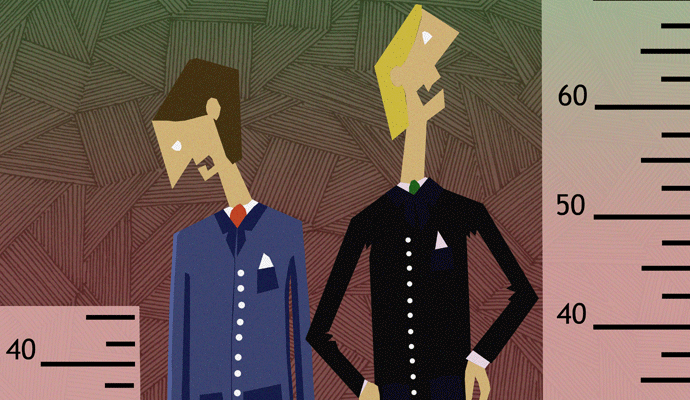No Sweat: Less Stress in Higher Ranks
Broader authority, aided by the power of delegation, steadies senior leaders’ hands.
Title: Leadership Is Associated with Lower Levels of Stress (Fee or subscription required)
Authors: Gary D. Sherman (Harvard Kennedy School), Jooa J. Lee (Harvard Kennedy School), Amy J.C. Cuddy (Harvard University), Jonathan Renshon (Harvard University), Christopher Oveis (University of California at San Diego), James J. Gross (Stanford University), and Jennifer S. Lerner (Harvard Kennedy School)
Publisher: Proceedings of the National Academy of Sciences
Date Published: September 2012
When managers move into leadership positions, the demands on their time and the scope of their responsibilities typically increase dramatically. As a result, leadership is often characterized as being exceedingly stressful. A benchmark Harvard Business Review article in 1981 noted that “managing others…creates unending stress.… Today’s managers face increasing time pressure with little respite.” Since then, stress management for leaders has become a booming business in itself.
But this study suggests that those who manage others actually experience less stress — as measured through both biological and psychological assessments — than non-leaders. In fact, the stress level seems to go down as executives climb up the corporate ladder. Leaders with more authority, and more freedom to delegate day-to-day oversight, do better on this front than managers below them. In particular, the authors report, the pressures associated with leadership are offset by the fact that upper-tier managers feel a heightened sense of control — a psychological component that is known to reduce stress.
Despite widespread interest, the link between leadership and stress remains largely unexplored through empirical research, mostly because of the obstacles involved in assembling a suitable sample of real-world leaders. For this study, the authors were granted access to middle- and high-level government and military officials enrolled in an executive education program at Harvard. Each official was paired with a Boston-area resident who was similar in age, sex, and ethnicity.
The participants in the study were categorized as leaders if they were responsible for managing others. Thus, not all members of the executive education program were leaders, and some members of the community were.
In the first experiment, which involved 216 participants, the authors compared the stress levels of leaders with non-leaders according to two well-established tests. The first was a measurement of the cortisol in their saliva; cortisol is often called the “stress hormone” because the body produces more of it in the face of acute or ongoing tension. The second test was a 19-item anxiety evaluation commonly used in psychology research.
After controlling for the participants’ demographics, mood, and tenure (a proxy for stability, which might be expected to reduce tension), the authors’ analysis showed that leaders had significantly lower cortisol levels than non-leaders. Leaders also reported much less anxiety on the psychological evaluation than non-leaders did.
The second experiment focused exclusively on a sample of 75 leaders, examining whether their relative rank helped determine how much stress they experienced. As the authors note, leaders vary in their power and responsibilities, which might entail personally managing a large number of people, delegating day-to-day operations, or having autonomy to make wide-ranging decisions that affect subordinates.
Accordingly, the authors measured the participants’ level of leadership in a number of ways. They calculated the leaders’ total number of subordinates, how many direct reports they had, and how much authority they possessed (as measured by the extent to which they could promote, demote, reward, punish, motivate, and supervise their subordinates). The leaders also completed an eight-item “personal sense of power” assessment, a widely used research tool designed to gauge how much control people feel they have in their relationships.
The analysis, again relying on a combination of salivary cortisol tests and a psychological evaluation, showed that leaders do not have equally low stress levels. The authors found instead that greater rank and authority correlated with lower stress levels. But, they added, correlation typically doesn’t result simply from amassing larger and larger numbers of subordinates. It also depends on reaching a position with the authority to delegate oversight of subordinates to less-senior managers.
“The stress-buffering effects of leadership are not necessarily conferred to those leaders responsible for managing many people,” the authors write, “but rather, those leaders who occupy a position characterized by many total subordinates and...who feel that they have substantial authority over those subordinates.”
In other words, it is the blend of power and delegation afforded to higher-ranking leaders that makes the difference, the authors argue. Day-to-day oversight of subordinates via a coterie of direct reports insulates these leaders from stress while it also instills a deeper sense of control.
The authors point out that they are not necessarily claiming a simple cause-and-effect link. For example, people with low anxiety levels might be well suited to be leaders, and may be more inclined to aim for top-tier jobs. Presumably, though, even those managers will get a boost from the many psychological benefits that come with top leadership roles.
Bottom Line:
Despite the heightened responsibilities and time demands associated with leadership, managers who oversee other employees experience less stress — as measured by biological and psychological tests — than lower-level workers. And the more power and control leaders have, relative to managers farther down the corporate hierarchy, the less anxiety they feel.


